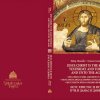A New Portrait of Constantine the Great
A Splendidly Preserved Record of a Prominent Historical Figure
By Alfred Emerson, Chicago Art Institute
У духу прославе јубилеја – 17 векова од доношења Миланског едикта, Одељење за документацију Народног музеја у Београду преноси чланак који је објављен 1911. године у престижном америчком научном часопису Scientific American Supplement. No. 1865, у коме се говори о бронзаном портрету Константина Великог.
У ауторском тексту, Алфред Емерсон, уважени историчар уметности Уметничког института из Чикага, захваљује Народном музеју у Београду и Српском легату у Лондону на пруженој шанси да ова вредни експонат види више пута, а затим читаоце упознаје са условима налаза портрета. Наиме, бронзана глава императора Константина I случајно је пронађена у Нишу, некадашњем римском граду Наисусу, док су се копали темељи за нови мост преко Нишаве 1900. године.
.Емерсон се бави сличностима нишког портета са ликом Константина на златном, сребрном и бронзаном новцу кованом за време његове владавине, наглашавајући да је ово један од ретких портрета за који можемо бити сигурни да представља Константина Великог. Нишки портрет Емерсон пореди и са бронзаном статуом Константиновог претходника Требониана, која се чува у њујоршком Метрополитен музеју, настављајући са описом општих одлика римске скулптуре 4. века које су видљиве и на oвом портрету.
Емерсон на крају подсећа и на заслуге Константина Великог, за време чије владавине је проглашен Едикт о толеранцији хришћанске вере, основана нова престоница Царства – Константинопољ, постављени темељи папства и хришћанске цркве, а недеља проглашена за дан одмора и верског обреда.




